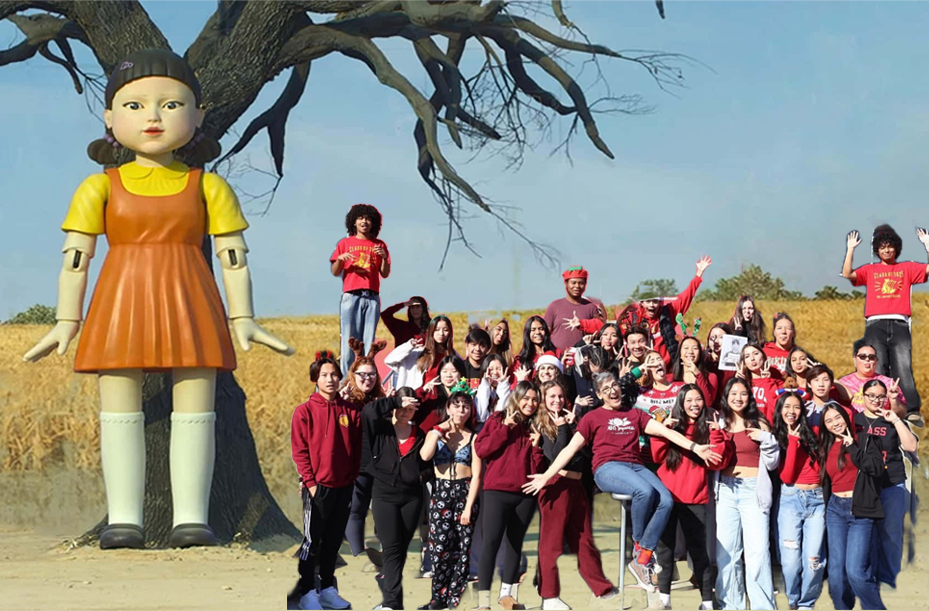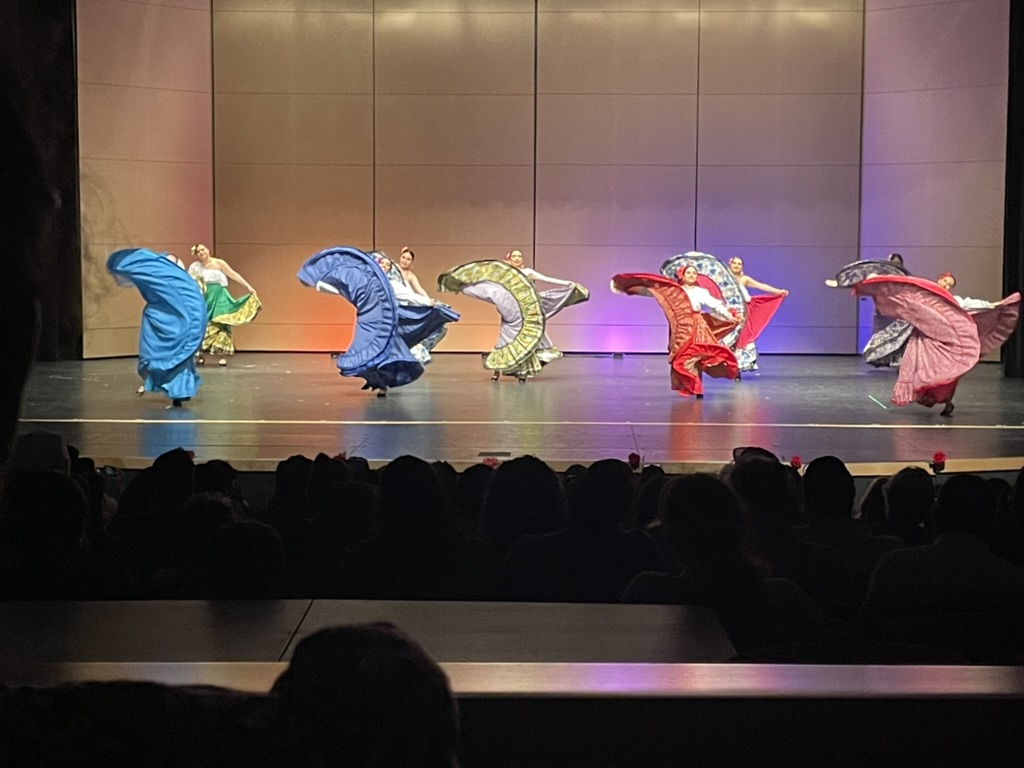
By: Tianyou Lee, Staff Writer
After an explosive past year which included a rap beef with Drake, the release of his sixth studio album GNX, and five wins from the Grammys, rapper Kendrick Lamar performed on one of the biggest stages in the country: the 2025 Super Bowl halftime show. To over 65,000 watchers in the stadium and 127.7 million live viewers, Lamar presented mostly tracks from his latest album along with fan favorites “HUMBLE.” and “DNA” in his 13-minute slot. Along with being an all-around entertaining performance, the show was also chock-full with symbolism, most notably as political commentary.
Lamar has never shied away from politics, and that remains true in this halftime show. One example was actor Samuel L. Jackson’s cameo. Jackson introduced and continually interjected Lamar’s performance, dressed in a blue suit with a red vest, white shirt, and blue bowtie, along with donning a tophat in the same colors. White stars were interspersed throughout his outfit. “It’s your uncle, Sam,” he said to introduce himself. His character was clearly meant to symbolize Uncle Sam, a common personification of the United States.
Jackson’s primary role as Uncle Sam was to comment on Lamar’s songs, often disparagingly. “Too loud, too reckless, too ghetto!” he criticized after Lamar’s performance of “squabble up.” Jackson represents how the U.S. broadly scorns black experiences and art as “loud” and of lesser value. “Tighten up!” he said, telling Lamar to clean up his act to appeal to white sensibilities. The only times Jackson praised Lamar was after the songs “luther” and “All the Stars,” performed alongside SZA, notably slower-paced pieces. “That’s what America wants! Nice, calm,” he said, smiling. But Lamar, unwilling to compromise his art, jumps into “Not Like Us,” which is notably more controversial due to its diss of Drake and Drake filing a defamation lawsuit over the song.
Jackson’s Uncle Sam character overall was a critique on how the U.S. disvalues Black art and what it views as appropriate or American. It is significant to emphasize that the Super Bowl is considered as a hallmark of American culture: Lamar was preemptively addressing criticisms that his style of rap, which is unapologetically tied to his hometown and black identity, would be unfitting for the event.
Color symbolism in Lamar’s and his dancers’ outfits also tied to commentary on race and America. Lamar himself was dressed in blue bell-bottom jeans and a blue jacket with red and white accents. The background dancers for the performance, black themselves, were also dressed red, white, or blue. One strong use of these patriotic colors was during Kendrick’s performance of “HUMBLE.” when the dancers formed an American flag with Lamar at the center. This formation represented the concept of a black America. While American society ostracizes black citizens and often treats them as other, Lamar’s performance highlighted how they, too, have always been American, foundational to the country as represented by the dancers making up the flag. This presentation is meant to challenge the notion of American culture’s standard cultural representations being white, like how Jackson’s Uncle Sam believes Lamar’s rap music should be toned down to fit the American audience.
Another running motif was the video game theme. The stage of the performance had a square, circle, triangle, and X, a nod to the Playstation controller. Lights in the crowd spelled out “START HERE,” “WARNING WRONG WAY,” and “GAME OVER” at various points throughout the show. Jackson’s commentary was also video game–esque. His introduction to the performance called it the “great American game” as a sort of double entendre to refer to football and the video game presentation of the show.
When analyzing the video game theme for symbolism, the “great American game” can actually be a triple entendre. The emphasis on games represents the sort of game every American is a player in, the bid for success and the American Dream that every citizen in this country is working towards.
Of course, this all ties back into Lamar’s commentary on race and politics. After a brief performance of “man at the garden,” Jackson said, “Oh, so you brought your homeboys with you. The old culture cheat code. Scorekeeper, deduct one life.” Using video game language like “cheat code” and the concept of multiple lives, Jackson’s comment hits especially hard when taken into account how, when there are attempts for marginalized groups like Black Americans to organize, or for the “homeboys” to come together, that’s not how the game is meant to be played, for the system to work. Deaths do occur from this. Jackson, not the character he played in the show but the real person, served as the usher for Martin Luther King Jr.’s funeral.
Lamar’s performance overall points to something deeper than just presenting his biggest hits. “40 acres and a mule, this is bigger than the music,” he said, referencing the U.S.’s false promise during the Reformation period to give freed, formerly enslaved families 40 acres and a mule each. He also makes note that genuine reform and change cannot be fully embodied in his show; they must go beyond. “The revolution ‘bout to be televised, you picked the right time but the wrong guy,” he said at the very start of his performance. And his final piece? “tv off,” with his final lyrics being, “Turn this TV off.”
(Photo credit: Album art of GNX by Kendrick Lamar)







